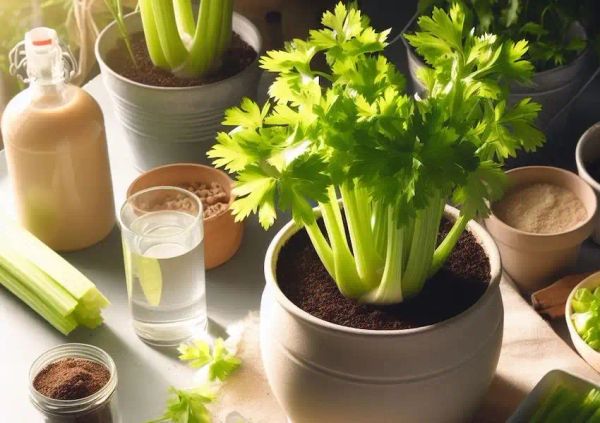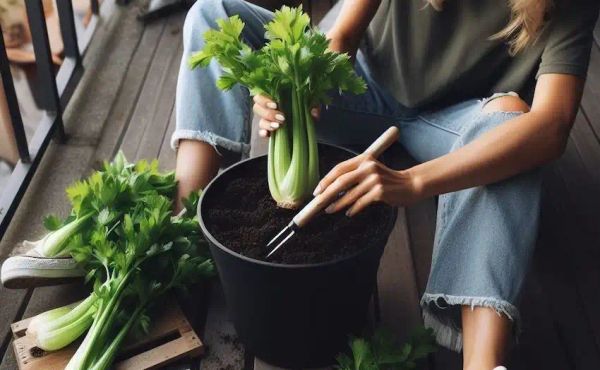Have you ever wondered if you can regrow vegetables from scraps? Well, the good news is that you can actually regrow celery right in your own home, without the need for a garden. It’s a simple and rewarding process that requires minimal effort and resources. In this guide, we’ll take you through the step-by-step process of regrowing celery from scraps, all within containers.

What You’ll Need:
- Fresh Celery: Purchase a bunch of celery with healthy and crisp stalks from your local grocery store or farmer’s market.
- Containers: Choose containers with drainage holes for both the water and soil stages. You can use glass jars, plastic containers, or any recycled vessel that can hold water.
- Water: Use clean, room temperature water for the initial regrowth stage.
- Potting Mix: Opt for a well-draining potting mix for the soil stage.
- Sunlight: Find a sunny spot in your home where the celery can receive adequate sunlight.

Step 1: Harvesting and Preparing Celery Scraps
- Cut the Celery: Trim the celery stalks, leaving about 2 inches from the base. This is where the regrowth will occur.
- Remove Outer Layers: Peel away any outer layers that may hinder the regrowth process.

Step 2: Water Regrowth
- Place in Water: Submerge the celery base in a container with enough water to cover the cut end.
- Change Water Regularly: Change the water every few days to keep it clean and provide essential nutrients.
- Wait for Growth: After a week or two, you should start seeing new leaves emerging from the center of the celery base.
Step 3: Transplanting to Soil
- Prepare Container: Fill a container with well-draining potting mix, leaving enough space for the celery base.
- Plant the Celery: Gently transfer the celery base from water to soil, burying it just enough to cover the roots.
- Water and Sunlight: Water the soil and place the container in a sunny location. Celery loves sunlight, so ensure it gets at least 6 hours a day.
- Maintain Moisture: Keep the soil consistently moist but not waterlogged. Celery prefers slightly damp conditions.
Step 4: Care and Harvest
- Fertilize (Optional): If desired, you can use a balanced fertilizer to promote healthy growth. Follow the package instructions.
- Monitor Growth: Watch as your celery plant grows and develops. You can expect to harvest outer stalks once they reach a reasonable size.
- Continuous Harvesting: Celery is a cut-and-come-again plant. Harvest outer stalks as needed, allowing the inner ones to continue growing.
By following these simple steps, you can enjoy the satisfaction of regrowing celery at home, even if you don’t have a garden. It’s a sustainable and cost-effective way to have fresh celery on hand whenever you need it. So why not give it a try? Happy regrowing!




